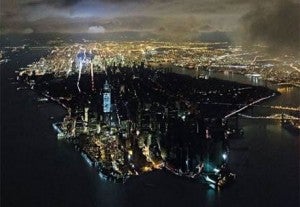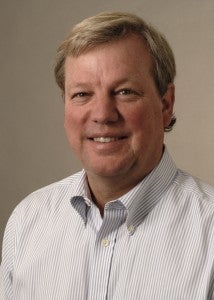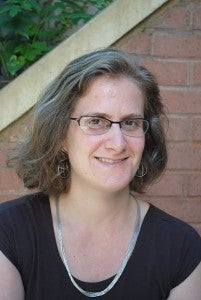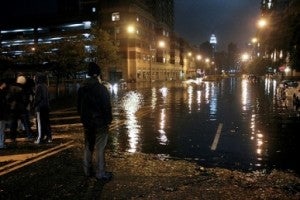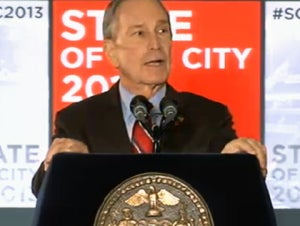 Extreme weather and aging infrastructure came together with a vengeance in Sandy, showing the fragility of the basic systems that sustain this vibrant city and region. Like so many others, my family lost power, heat and water during Superstorm Sandy, and I watched out my window as a giant flash marked the moment that waters crested a 12-foot retaining wall at the 14th Street ConEd plant.
Extreme weather and aging infrastructure came together with a vengeance in Sandy, showing the fragility of the basic systems that sustain this vibrant city and region. Like so many others, my family lost power, heat and water during Superstorm Sandy, and I watched out my window as a giant flash marked the moment that waters crested a 12-foot retaining wall at the 14th Street ConEd plant.
New Yorkers are all too familiar with the devastation that followed, and the disruption that spread far beyond the water’s reach. As the immediate crises are resolved, our attention is now on the complex challenge of long-term resilience.
One big step: The NYS 2100 Commission, a panel of experts assembled by New York Gov. Andrew Cuomo back in November, just two weeks after the storm. EDF President Fred Krupp served on the commission, and our energy team prepared extensive recommendations on how to make our energy system more robust, resilient and adaptable. In yesterday’s State of the State address, he talked about the results.
As it turns out, some important solutions were right under our noses.
For example, amid the darkness and devastation, there were dozens of homes, businesses, even whole communities that kept their lights on and the water because they were designed to isolate breakdowns, heal quicker, and work with natural systems rather than against them.
Success stories were located across our region:
- Lights stayed on for sixty thousand residents of Co-op City in the Bronx thanks to a combined heat and power plant that can operate independent of the grid. Ditto the office tower at One Penn Plaza, an apartment building at 11 Fifth Avenue, and large parts of the campuses at Princeton and NYU.
- In Bayonne, NJ, the Midtown Community School used a combination of solar panels and a generator to offer a safe, warm place to stay for over 50 residents during the storm.
- On Long Island, the Villani family kept their lights on thanks to a 4.8 kw solar array that happens to have a battery bank. “We had friends and neighbors coming over to charge phones and batteries,” Stephanie Villani said.
- In lower Manhattan, the community group Solar one used solar panels to offer residents of Stuyvesant Town, the sprawling 35-building apartment complex, a place to charge their phones and computers.
Exceptions like these should be the rule next time. Unfortunately, today’s utility grid is set up to discourage more of these success stories – which are also cleaner and more efficient.
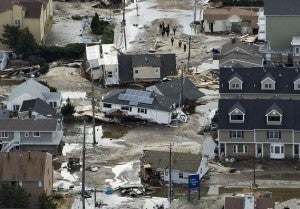
Source: Reuters
In fact, many buildings outfitted with fresh new solar arrays stayed dark thanks to cumbersome, outdated rules and regulations. Ironically, the solar panels were not making electricity when the grid was down, precisely because they were permanently connected to the grid and had to be shut down, rather than simply unhook when the larger system failed. So instead of sunshine, they were running on diesel power – if they were running at all.
Building a smarter grid, and encouraging clean, efficient ‘microgrids’ that provide islands of heat and light means fewer outages and faster recovery. A smarter grid would also have the intelligence needed to pinpoint outages, cordon off damage, and reroute power.
Clearing out the legal cobwebs and requiring utilities to unlock their grids more easily would make their systems stronger and more resilient in a crisis, and open the door for more efficient, renewable energy solutions. It would also open up opportunities for new ways to finance the upgrades needed to take full advantage of efficiency and renewables in today’s buildings.
(You can read EDF’s blueprint for a smarter, more robust grid here.)
Climate change means that higher sea levels and more extreme storms are the new normal. Unfortunately, some of this is already locked in. But we still have an opportunity to prevent the worst, most costly consequences by working together to reduce heat-trapping pollution. Superstorm Sandy reminded us of the need to prepare for a more challenging future. We need to make sure the steps not only protect against the impacts we can’t avoid, but also help prevent those we can.
Yes, we will have to fortify our buildings and infrastructure, change building codes and keep generators on hand in the face of extreme weather. But a lot of the steps we can take to keep the lights on during a crisis are also steps we can take to cut the pollution that is linked to climate change and extreme weather in the first place.
As we invest federal emergency dollars to rebuild, as we get ready for the next time – let’s make sure we’re taking every step that solves for both safety and less pollution at the same time. Efficiency, a smart grid, transparent information, renewables. Unlocking multiple benefits like these can help us rebuild better, faster and stronger. And lead the way for the world’s great cities, many of which are on the coast and in harm’s way just like New York.
My kids and I were lucky to weather the storm with just inconvenience. But as I think about how might live in a future New York City, I’d like to be sure that we’re doing everything we can now to run this town on safe, clean energy. The Cuomo commission report takes a big step in that direction: let’s join the Governor and the members of this commission in making its recommendations a reality. This is an opportunity that business, political and community leaders must not miss.










